Carbon Capture Gives Way to Carbon Recycling


Last week, the U.S. Department of Energy kicked off a new campaign to promote carbon capture technology, in partnership with a fossil energy advocacy organization called the U.S. Energy Association. The new campaign is clearly not aimed at keeping fossil fuels in the ground. However, carbon capture could become part of a more sustainable approach to incorporating biofuels in a low-carbon economy.
What is wrong with carbon capture and sequestration?
Carbon capture and sequestration has been proposed as an effective solution to the climate crisis. However, carbon capture does not address the root of the crisis, which is the transfer of carbon from under the ground into the atmosphere, in the form of coal, oil and natural gas.
If fossil energy stakeholders continue to produce at pace, carbon capture and sequestration will simply amount to wheel-spinning on a global scale, keeping up with the problem rather than resolving it.
Carbon capture is also beginning to lose its luster on bottom-line terms as studies indicate that simply planting trees at a massive scale can accomplish similar results, with far less disruption and expense. Falling costs for renewable energy and energy storage are also making the carbon sequestration picture less attractive from an economic perspective.
Costs and disruption related to infrastructure expenditures are also major considerations, and the Department of Energy does not skirt around those issues. The new campaign consists of a traveling seminar that will visit to six different cities, and it includes a session on infrastructures.
“The maturing carbon market is driving demand for CO2 pipelines and related (compression/oil/processing/gas/NGL/water) infrastructure,” explains the Department of Energy, listing tribal land rights and interstate law among the issues yet to be settled.
Carbon capture and recycling
Those infrastructure issues make tree-planting look even more attractive compared to technology-based solutions. As a nature-based solution, trees capture carbon at low cost, and they have the benefit of supporting additional economic activity in reforested and newly forested lands, such as recreation and tourism.
In addition, if forests are managed properly, trees can naturally recycle carbon in the form of lumber, paper and numerous other forestry products.
That recycling element is where the carbon capture field is beginning to sharpen its focus. As a means of extracting value from carbon, recycling could help make the investment in carbon capture technology and infrastructure financially viable.
The Department of Energy campaign supports carbon recycling as a chemical building block for fuels, plastics and other products, among other uses.
A biofuel connection for carbon capture
That still does not address the root of the climate crisis, but the picture changes when captured carbon is deployed to grow crops, including biofuel crops. That angle could provide a way forward for some fossil energy stakeholders. Most notably that includes ExxonMobil, which is a member of the U.S. Energy Association.
Unlike some of the other global leaders in the energy sector, ExxonMobil has resisted diversifying into wind, solar or electric vehicles. Instead it has doubled down on shale gas and petrochemicals.
One exception is in the area of algae biofuel. ExxonMobil has kept a hand in foundational research on algae biofuel since 2009 through the firm Synthetic Genomics, though its efforts to commercialize algae biofuel appear to be on semi-permanent hold.
ExxonMobil’s interest in commercial production could gain new life if carbon capture provides an economical pathway for enhancing the growth of algae biofuel crops.
The biofuel industry has faced criticism from a sustainability perspective. However, the field is becoming more sophisticated. With the advent of next-generation sources like algae, biofuel could help foster a more aggressive approach to decarbonization as a replacement for fossil fuels.
Evidence is emerging that carbon capture at fossil power plants may do more harm than good, but the same calculation does not apply to biofuels. In addition, the economic case for carbon capture may also prove more advantageous where biofuels are involved.
A more holistic approach to carbon capture
As it happens, the intersection of algae cultivation and bioenergy is one of the carbon capture angles that the Department of Energy is pursuing.
One important development occurred in 2017, when the agency held a workshop aimed at exploring the use of algae to capture carbon from biorefineries as well as fossil power plants and other industrial sites.
The Department of Energy has been following up since then. Earlier this month, the agency announced a new $15 million round of funding for carbon recycling research and development, part of which will go to projects that use captured carbon to grow algae.
On January 23, the Department of Energy also announced a new $100 million round of funding for bioenergy research that includes a robust focus on algae.
But algae is not the only focus of the Department of Energy’s activity. On January 10, the agency dedicated a new $75 million round of funding for bioenergy crop research focusing oilseeds and other non-algae biofuel crops.
Microsoft goes wide on carbon capture
The bioenergy angle also sheds new light on Microsoft’s new carbon-negative initiative. In a January 16 blog post, Microsoft announced an ambitious plan to achieve carbon-negative status by 2030, as a midway step toward a 2050 goal of removing “all carbon the company has emitted either directly or by electrical consumption since it was founded in 1975.”
Part of the plan involves establishing a $1 billion fund to accelerate the development of carbon capture systems. According to Microsoft, the fund will focus specifically on bioenergy with carbon capture and storage, along with forestry and soil projects and direct air capture.
Of particular note is the company’s strategy of deploying nature-based solutions until technology-based solutions scale up.
Microsoft also addresses the root of the climate crisis through other elements of the plan that slash fossil fuel consumption. In addition to converting 100 percent of its operations to renewable energy, Microsoft plans to lean on its supply chain to decarbonize — and to provide its customers with tools to reduce their own carbon footprints.
As Microsoft notes, the past practice of buying carbon offsets is not sufficient to decarbonize the global economy, and a far more urgent approach is needed.
The tech giant's plan is still no substitute for strong government policy, but fossil stakeholders like ExxonMobil will need to prepare for rapid decarbonization as more leading corporations ramp up their plans for survival.
Image credit: Kevin Ortiz/Unsplash
Social Impact Travel Continues to Grow in Popularity
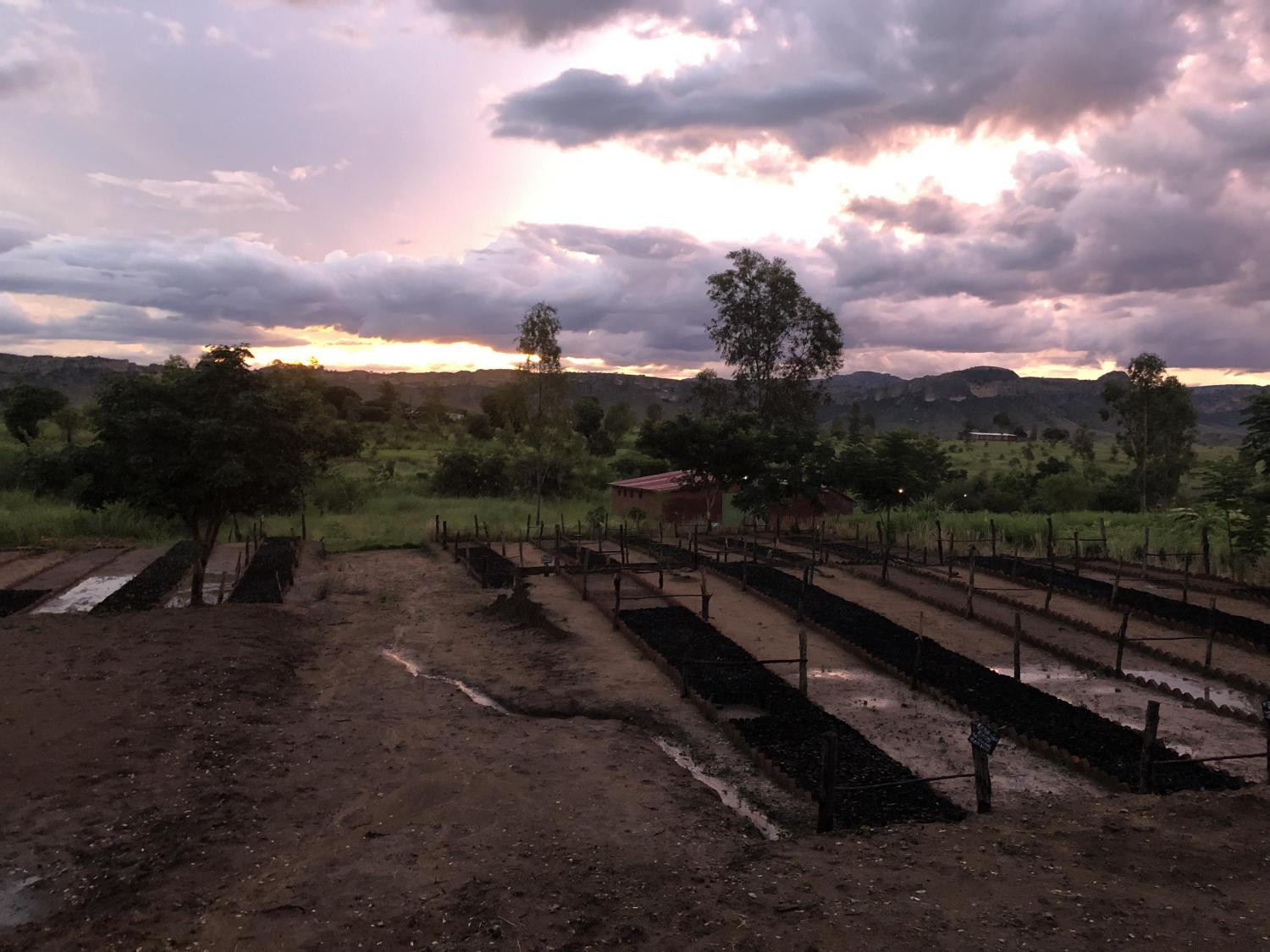
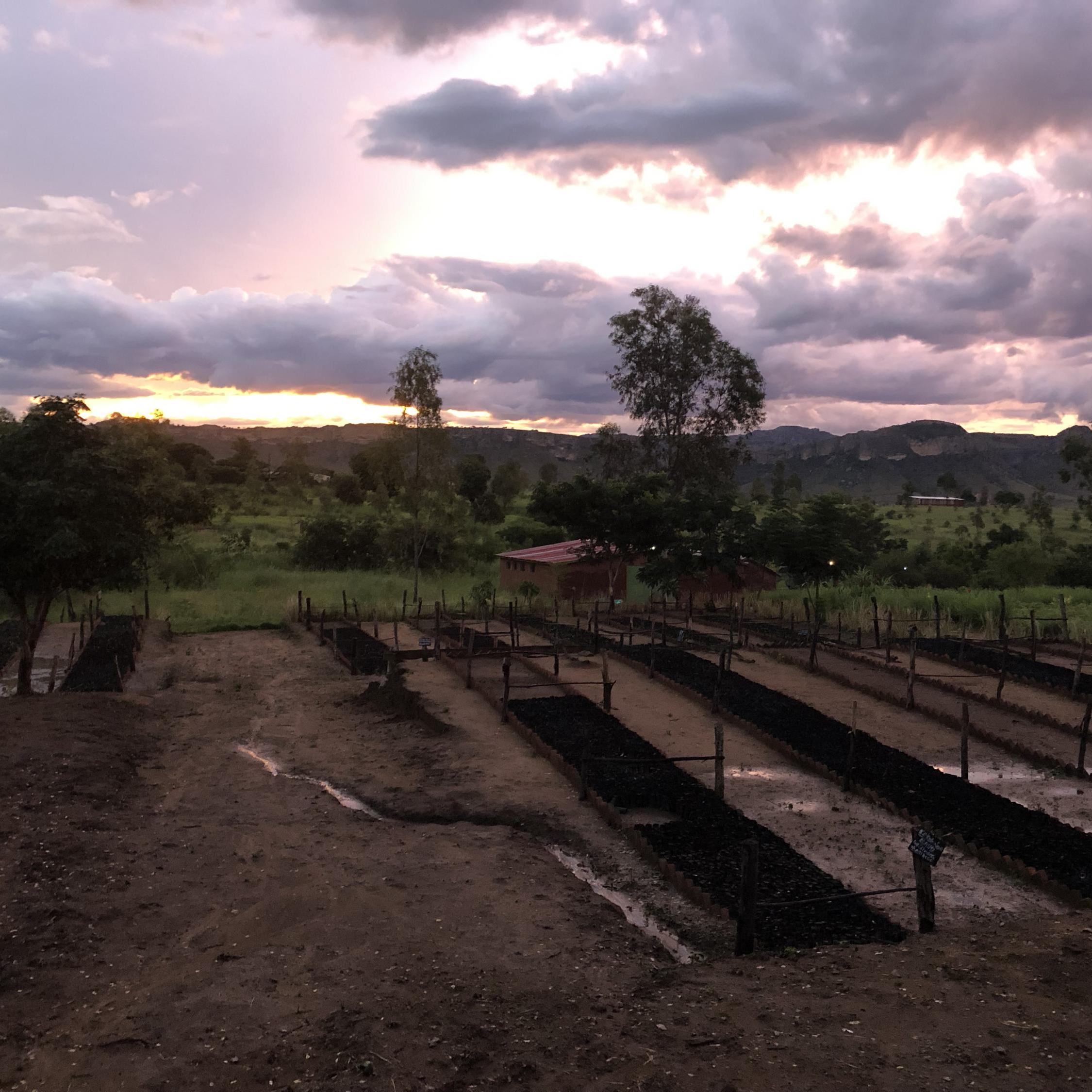
The recent news coming out of China aside, the global travel sector continues to grow at a faster rate than world GDP, according to at least one international travel group. That growth does not necessarily mean local citizens benefit. But thanks to factors including younger travelers’ interest in having a different experience, the power of social media, and surging environmental and social awareness, social impact travel is thriving.
When we say social impact travel, we’re talking about itineraries that seek to support local communities and are more responsible, sustainable and respectful of local cultures. The word has long been out that all-inclusive trips are often far from being “inclusive,” as the saying goes.
A partnership driving social impact travel
One company driving this trend is G Adventures, which for several years has worked with its nonprofit partner, Planeterra, to ensure that locals at tourist destinations worldwide can gain both income and new skills from tourism.
Planeterra has proven to be an indispensable partner as its staff has worked to launch community development projects in several countries where G Adventures runs tours. These projects have helped build wealth for local communities while offering travelers an experience they would have otherwise lacked.
The latest of these initiatives is what G Adventures calls Project 100. As the name suggests, the goal is to have at least 100 community tourism projects included within the travel operator’s various itineraries by the end of this year.
The opportunity for travelers to work on a project while they venture abroad is one way to build goodwill in local communities while offering a more meaningful experience for visitors. Many adventurers have the desire to work on a social impact project overseas but cannot make a long-term commitment akin to volunteering for a humanitarian relief organization, nor can they set aside a couple years for signing up for a program like the U.S. government’s Peace Corps.
The success of social impact travel is in the numbers
But taking a day or two to lend a hand with a community project can help satisfy that yearning to do good while in a different setting far from home. G Adventures and Planeterra say they are nearing their goal with 80 such itineraries on the books. The five newest projects are underway in Australia, Botswana and Madagascar (hosting a deforestation project, shown above), along with two in Malaysia.
“It’s our goal for 90 percent of G Adventures’ small group trips to visit a community tourism project that supports women and children, and indigenous culture," G Adventures founder Bruce Poon Tip said in an emailed statement to TriplePundit. "Now more than ever, we’re also looking at projects that empower local communities to protect their local environment at the same time. Our definition of community tourism goes beyond the projects themselves, as the ripple effect of positive impact travel extends into the local community, to our local suppliers and ultimately to our travelers."
According to G Adventures, more than 100,000 travelers visit a Planeterra project each year, which results in leaving an impact on the lives of over 60,000 local people. The company says these social impact travel itineraries are selected based on the largest benefit to a community resulting from traveler numbers — notably where women, youth and indigenous people are at a disadvantage by a lack of access to education, jobs and income opportunities.
Image credit: G Adventures
How Data-Based Methods Can Achieve Racial Equity in the Workplace


A recent study conducted by nonprofit consulting firm FSG outlines data-based methods for improving racial equity in a company’s customer-facing frontline workforce.
The researchers identified 23 practices grounded in data that advance racial equity at work.
These practices fall into three brackets — culture, management and advancement — and are meant to guide business leaders, managers and human resources (HR) professionals. To be clear, FSG does not frame advancing frontline employees of color as charity work or altruism. These methods are designed to help businesses capitalize on the competitive advantage of racial equity.
The strategies are based on extensive data, including interviews with executives, experts and frontline employees of color; a literature review; and data on HR practices from employers at 75 national retail firms between 1971 and 2002. The strategies identified in the paper were found to have a statistically significant effect on the advancement of frontline retail employees of color.
A method that eclipses tradition
The research focuses on frontline employees of color because they are more likely to remain in their entry-level positions compared to their white counterparts. Structural barriers repeated and reflected in corporate cultures, management, and promotional systems make it challenging for frontline employees of color to thrive and advance in their workplaces.
The researchers contend, “Companies that are successful in increasing racial equity go beyond traditional diversity and inclusion efforts by shifting their management and HR practices and transforming their company cultures.”
One company that FSG highlights is Starbucks. This may come as a surprise, as one branch in Philadelphia was in the news in 2018 for racial profiling that led to unlawful arrests. In fact, it is the aftermath of that very event that is the focus of the report’s praise. Starbucks did not brush the incident off with a sincere apology. Executives did apologize, but they also closed all stores and paid all employees for anti-bias training that is now part of employee on-boarding.
Starbucks also reassessed how it hires and promotes employees with specific attention to race and gender. Equity is no longer a mission with intangible methods — the company’s procedures and goals are articulated and actionable.
Starbucks provides the example of a nuanced equity strategy that touches on more than one of the report’s evidence-based practices. Starbucks has (at least) exhibited accountability for its actions, ongoing training for all employees and support systems designed specifically for frontline employees of color.
Businesses like Starbucks, Sodexo and Walmart (also lauded in the report), however, are unique in their DNA-changing approaches to equity.
“Many employers have implemented diversity and inclusion efforts, but these have not been sufficient to improve experiences of and outcomes for frontline employees of color,” the report's authors note.
These researchers suggest five steps for companies that want to make a real commitment to equity:
- Understand the intricacies of the internal and external factors that contribute to racial inequity.
- Collect quantitative and qualitative data on employees that is disaggregated by identifiers like race and gender.
- Use the 23 evidence-based practices from the report to evaluate the company’s current state of affairs, especially for frontline employees of color.
- Pilot evidence-based practices and assess whether they are working for employees.
- Measure, modify and share progress and lessons.
The competitive advantage of racial equity
The business benefits of improving racial equity — and the ramifications of leaving a vacuum — have recently seen increased attention. Last year, 101 investment companies signed a statement asking companies to release data about their workplace equity practices and policies.
The form is still open for investors to sign on.
Outside of pressure from investors, FSG researchers also outline business benefits that include reflecting an increasingly diverse customer base, tapping into the full potential of the company’s talent, creating a more engaged and productive frontline workforce and more.
The report states that 67 percent of job-seekers consider the diversity of a company's workforce before taking a job.
Equity is serious business. This FSG report takes the ambiguous and formless business equity of the past and brings it to the future, where concrete, actionable steps lead to empowered workers and workplaces.
Verizon Stands Firm on Commitment to Become Carbon Neutral by 2035

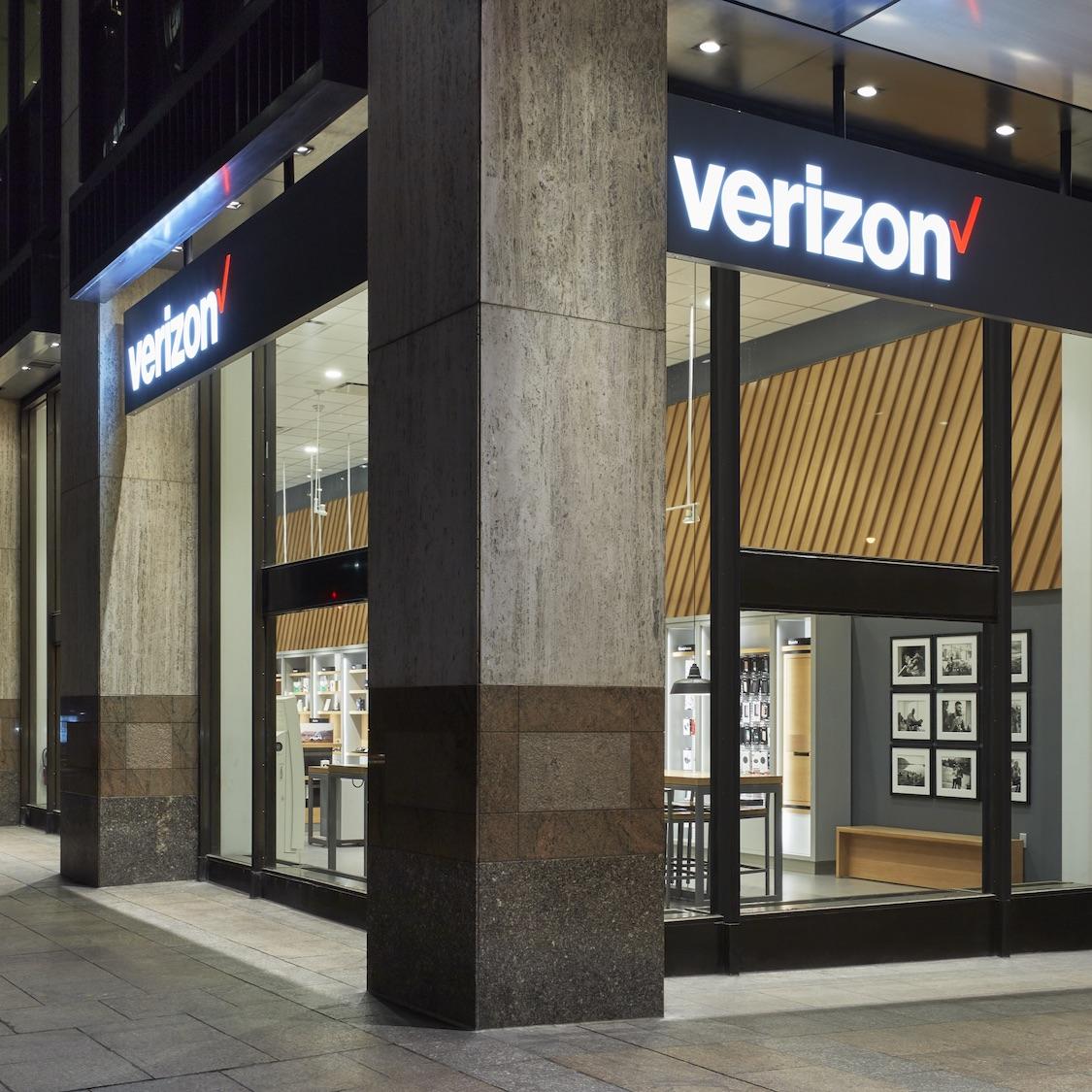
Building upon a series of pledges to become a more sustainable business, the largest telecommunications company in the U.S. recently confirmed its goal to become carbon neutral by 2035.
The affirmation applies to Verizon’s announcement in April 2019 that it would take on its Scope 1 and Scope 2 emissions. Additional goals include plans to slash electronic waste, decrease water consumption and do its part to counter deforestation.
According to Verizon, “This announcement underscores how the private sector can mobilize its business and resources further to build a more sustainable planet.”
What exactly is Verizon promising?
For a company, going carbon neutral means generating no net positive release of carbon dioxide into the earth’s atmosphere, either by powering its operations with renewable energy or through more indirect tactics such as buying renewable energy credits (RECs) or carbon offsets. Such a policy means adopting tactics to balance out an organization’s carbon emissions with the desired result: a net zero carbon footprint.
Plans for getting that net zero carbon footprint can be as simple as planting enough trees that will produce oxygen to offset a company’s C02 emissions. However, Verizon insists it is taking a more aggressive approach to carbon neutrality.
“Sustainability and social responsibility are part of Verizon’s DNA,” Jim Gowen, Verizon's chief sustainability officer and vice president of supply chain operations, said last year. “As an emerging leader in sustainability, Verizon understands its responsibility to continuously evolve and innovate to meet new challenges and expectations.”
How will Verizon meet this carbon neutrality goal?
In promising to go carbon neutral in just 15 years, Verizon has some big changes to make.
To start, the telecom giant plans to attack the problem at its source by cutting back on greenhouse gas emissions. It also plans to increase the use of renewable and clean energy.
According to the company, it is already on this path by deploying a bevy of programs. These include giving customers options to reduce their own carbon footprint when using Verizon’s services; leasing space in energy-efficient buildings; deploying internal green teams across 44 countries; installing onsite renewable power installations; and, at last count, planting at least 724,000 trees with a goal of 2 million by 2030.
As a result, the company will:
- “Source or generate renewable energy” equal to half of its total annual electricity consumption by 2025.
- Add at least 24 megawatts of onsite clean power generation mid-decade.
- Reduce carbon intensity by 50 percent from a 2016 baseline.
One of the more compelling initiatives Verizon is taking on is its 2019 issue of a $1 billion green bond. The company says the proceeds will fund various initiatives related to renewable power, energy efficiency technologies, green building projects, water conservation and biodiversity.
What other steps is Verizon taking to be more sustainable?
Although the pledge to go carbon neutral is impressive, especially for a company of its size, it is just one in a long list of Verizon’s recent sustainability goals. Those initiatives have grown in number and intensity, and last year, Gowen told Green Tech Media Verizon is “in the midst of a sustainability evolution.”
And that’s not all. Results from Verizon’s past goals proved the company is serious about becoming more sustainable and responsible. In 2018, Verizon said its sustainability progress included eliminating 8.2 million tons of C02 emissions, repurposing, reusing or recycling 100 percent of all wireless devices and accessories, and offsetting 20,000 metric tons of CO2 through various clean energy initiatives. Verizon’s pledge to go carbon neutral, as the company’s CEO, Hans Vestburg, reiterated during last week’s World Economic Forum meetings in Davos, could build upon those successes.
Reducing its carbon footprint through targeted sustainability initiatives has long been a goal of the telecom giant; its efforts may inspire its competitors, and companies in other sectors, to step up their sustainability game.
Image credit: Verizon
Water Crises Are a Top Global Risk, But We Have the Power to Prevent Them


The World Economic Forum releases the Global Risk Report each year in advance of its annual meeting in Davos, Switzerland. Water crises ranked among the most serious risks facing society in each of these reports since 2012, with the exception of one. 2020 is no different, with water crises named among the top 10 global risks with respect to both impact and likelihood to occur. More than 85 percent of respondents to WEF surveys expect water crises to increase globally in 2020, along with extreme heat waves, destruction of ecosystems, and health impacted by pollution.
Is water stress a societal or environmental risk to the economy?
For the first time, environmental issues fill out every spot in the top five most likely global risks. Interestingly, the WEF lists water crises as a societal rather than environmental risk. But in that category, water outstrips every other societal risk in terms of impact, including food crises, infectious diseases, involuntary migration, and social instability. The classification raises an important question: Where does water fit in the economic landscape?
Clearly, water is a part of the natural environment. When looking at the other environmental risks the WEF observes, such as climate action failure, extreme weather, natural and human-made environmental disasters, and biodiversity loss, water crises run through every one of those categories. Our societies, economies and ways of life are deeply dependent on water.
“Water is a key ingredient to human health and livelihoods,” said Bridgette McAdoo, vice president of freshwater and food corporate strategy and engagement for the World Wildlife Fund (WWF). “Energy, food, transportation and nature all depend on a very limited reserve of clean, flowing water. Climate change, unsustainable agriculture practices, poorly planned infrastructure and pollution all threaten the vitality of this critical resource.”
So, is it a societal or environmental risk? The answer is: both. Failure to take action on climate change is a failure to protect and preserve water supplies, and extreme weather causes water crises across the board, whether it’s too much water or not enough. The WEF includes things like migration, trade, investment and the exacerbation of geopolitical tensions as societal challenges. And water affects or is affected by every one of those. We are already seeing migrations spurred by water crises, and trade and investment will lessen in places that do not have adequate water supplies. Overall, the World Bank estimates that failing to deploy better water management policies could result in regional GDP losses of up to 10 percent by 2050.
To reduce risk, look at the whole landscape
If decision-makers look at water through one lens, they run the risk of missing opportunities within the nexus where different sectors interact, such as energy and water.
For example, renewable energy targets are critical for reducing carbon emissions. But by focusing on power generation alone, most policymakers fail to see the potential to reduce emissions and conserve water in tandem by addressing issues such as poor infrastructure in the water sector, which can lead to high leakage rates. Those high leakage rates mean energy is wasted in treating and moving water that never reaches its intended consumer.
A more holistic approach to climate change is mindful of these interconnected systems and where they interact, engaging both the energy and water sectors to address common goals. In another example of synergy, the vast water storage areas at water treatment facilities are often ideal locations for solar installations that can power systems directly, as was done by Thames Water in the U.K.
“We must look for cross-cutting opportunities across sectors and national boundaries to better manage freshwater supplies,” McAdoo told us. “Governments, companies and communities must collectively manage water to secure water for our future.”
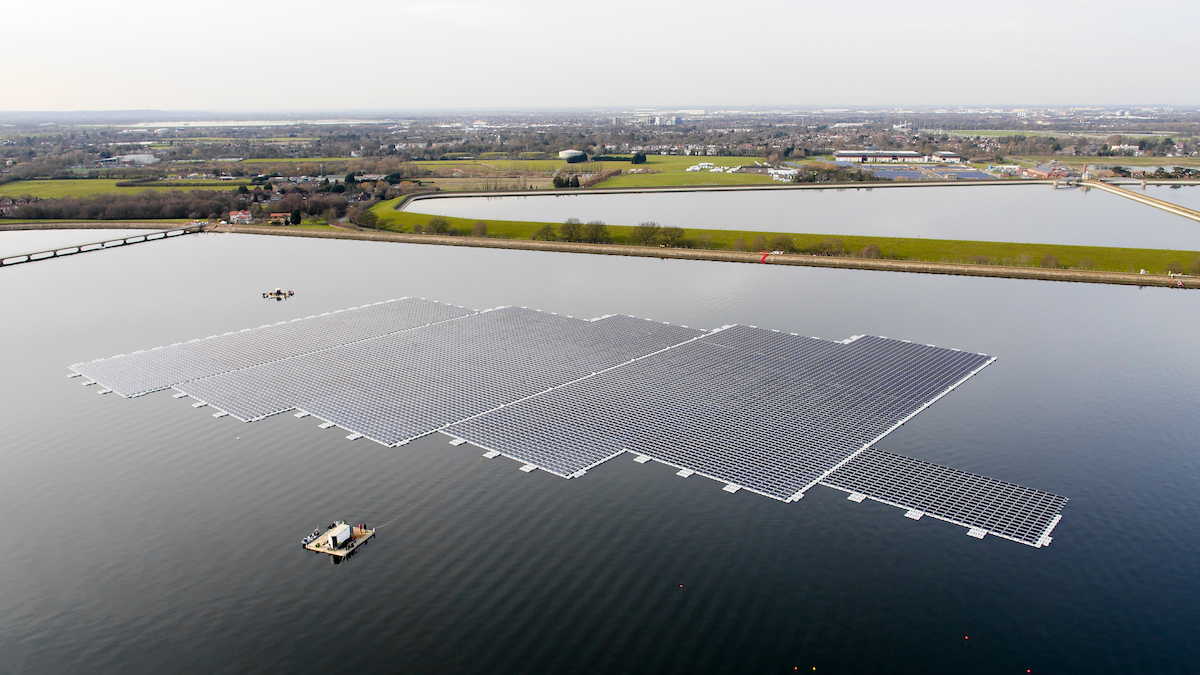
(Image: The private utility company Thames Water powered up Europe's largest floating solar installation at Queen Elizabeth II reservoir near London Heathrow airport in 2016, saving the company more than $25 million each year and powering systems with clean energy.)
Agriculture is another industry which has a high level of intersectionality with water. “Water is a key resource for the agricultural sector, and it is a main factor in food security, as well as the livelihoods of agricultural workers around the world,” says Colin Strong, a corporate water stewardship analyst at the World Resources Institute (WRI), a Washington, D.C.-based nonprofit that has a team focused on mapping, measuring, and mitigating global water challenges. Food crises also rank high on the WEF’s risks list, and intersectional challenges exist in both the quality and quantity of water needed to ensure food security, all of which is further exacerbated by climate change.
The Global Risk Report also separates climate action failure from extreme weather, natural disasters, biodiversity loss, and human-made environmental disasters. Some measures to reduce risk in these areas need to be targeted to the specific issue, the WEF asserts. Extreme weather and natural disasters, while linked, may require different solutions. However, they cannot be entirely divorced from each other.
Similarly, water crises can seem like an overwhelming problem to solve, but it is an important enough issue that we should try, and we are. The solutions are political more than technological or monetary: Many countries could resolve the lion’s share of their water issues for under 2 percent of their GDP, Strong says. “There is no shortage of success stories on the local level—for example, ‘green’ infrastructure in a water supply—but success or failure will result from our ability to turn patchwork successes into common practice everywhere,” he told us.
Much like climate change, water flows through all of the environmental risks we face, and many of the societal ones. As we see the integrated effects of climate change and water crises, it is time to also look at the risk factors and the solutions in a more holistic manner. A drought requires a different solution than a water quality crisis, but they are connected. And efficiencies in the solutions, both technological and political, can be found with a view toward a broader landscape. Perhaps for its 2021 report, the WEF will include a new category on the bigger water picture and the risks—and opportunities—within the water sector.
This article series is sponsored by DuPont Water Solutions and produced by the TriplePundit editorial team.
Image credits: Wynand Uys/Unsplash, Thomas Somme/Unsplash, Jessica Furtney/Unsplash and Thames Water
Goldman Sachs: Appoint a Woman to Your Board, or Forget Your Dream of Becoming a Paper Billionaire


Well, it wasn’t said quite like that. But the message coming from Davos, Switzerland, yesterday was loud and clear: Goldman Sachs will no longer help companies go public unless there is some modicum of diversity on their boards of directors.
“Starting on July 1 in the U.S. and Europe, we’re not going to take a company public unless there’s at least one diverse board candidate, with a focus on women,” Goldman Sachs CEO David Solomon said on CNBC’s “Squawk Box” during the World Economic Forum in Davos. “And we’re going to move toward 2021 requesting two.”
So why would this investment banking titan, whose alums include former U.S. Treasury secretaries Robert Rubin, Hank Paulson and Steve Mnuchin — not to mention other political headliners like Rahm Emmanuel, Jon Corzine and Steve Bannon — announce such a change?
Is Goldman Sachs really taking a stand?
Forget your assumptions that Goldman Sachs did this out of political correctness or in an attempt to make a moral or ethical stand.
There is plenty of evidence that suggests having a more diverse board of directors and C-suite results in better all-around performance in the long term.
Aflac’s CEO Dan Amos summed it up best two years ago. One of his most frequent sayings is that he already knows what a 60-year-old white man thinks, so there is no reason to surround himself with other 60-year-old white men. As CEO of Aflac since 1990, Amos has been on the record saying that he is determined to build a diverse set of leaders at the table whenever critical decisions about the company’s strategy and future are being made.
Women still face a long road in getting appointed to corporate boards
Nevertheless, despite the data suggesting that more women are serving on corporate boards in the U.S., there is no shortage of critics who say many companies are still moving at a glacial pace when it comes to diversity.
To date, one can argue that Goldman Sachs is putting its money where its mouth is. The 11 members of Goldman's board of directors include four women, and it has said in recent disclosures that it is on course to hire more women, as well as racial and ethnic minorities. Last year, Solomon said the company would require half of the new junior bankers hired to be women.
Some may insist this announcement is more of a splashy marketing or public relations move. Connie Loizos of TechCrunch, however, best articulated the reality facing corporate America and the banking giants that finance them: “Some of the biggest banks in the United States are among the most powerful institutions in the world. But like every incumbent, they still have to hustle to stay relevant.”
Image credit: Robert Bye/Unsplash
Watch These 4 Clean Energy Trends in U.S. Cities in 2020


At the start of this new decade, American cities, states and businesses harnessing clean energy have already come a long way on the road to cutting greenhouse gas emissions to help tackle the climate crisis:
- 155 cities have committed to 100 percent community-wide renewable energy;
- 15 states plus Washington, DC and Puerto Rico have official targets to get over 50 percent of their electricity from clean resources;
- Businesses are going beyond merely purchasing renewable energy to investing in battery storage, pairing electric vehicle charging with renewables and matching energy consumption to renewable resources on an hourly basis, and
- Many of the largest investor-owned utilities have set decarbonization goals and committed to a clean energy transition.
This puts these subnational U.S. actors on pace to reduce emissions 25 percent below 2005 levels by 2030. To make the transition to more sustainable energy, city governments must work simultaneously to meet municipal energy demand with renewables, partner with residents and the business community to increase community-wide access to clean energy and break down system-level barriers, such as regulatory or market hurdles.
Here are a few energy trends in U.S. cities to watch in 2020:
1. Cities will sign unprecedented utility-scale clean energy deals
In the last few years, cities have signed increasingly large power purchase agreements (PPAs) to source electricity from renewable energy developers for municipal and community use. In 2018, Philadelphia signed a 70 megawatt PPA representing 22 percent of the city government’s load. Taking it a step further, last year, Cincinnati signed a 100 megawatt deal for the nation’s largest municipal solar farm, with the first 35 megawatts meeting about 30 percent of the city’s municipal needs and the remaining 65 megawatts benefitting community residents who get their electricity from the city’s community choice aggregation program. The 20-year contract will provide a stable source of clean energy and will save the city an estimated $1.7 million.
We should expect cities to get ever more creative with PPAs, signing large deals to meet municipal needs and expanding to community members and residents. We may also see joint deals with other jurisdictions or community partners such as businesses and universities, to access economies of scale.
2. Cities will work with businesses to cut carbon emissions
Many cities choose to begin their clean energy transition by tackling municipal energy usage, which is within the local government’s control. In contrast, making progress toward community goals requires the support of and partnership with many community stakeholders, including local businesses. This is already happening in Philadelphia, where Mayor Jim Kenney launched the Climate Collaborative of Greater Philadelphia to provide training and technical assistance to city leaders to implement their own climate-related goals. Over 40 partners have signed up, including universities, small businesses, NGOs, clinics and hospitals and transit authorities. Drawing on the city’s recent experience, the Collaborative’s first workshop covered how to procure renewable electricity through off-site solar agreements. In 2020, expect to see more collaboration across sectors to move more efficiently toward community-wide energy goals.
3. Cities will band together to overcome barriers to clean energy
After cities sign clean energy commitments and begin to identify options to increase renewable energy use, they often encounter barriers in the form of laws or regulations that come from outside the city limits, such as the state government. To address these hurdles, cities have started banding together to create coalitions for change. In Virginia, sustainability staff from cities and counties organized trainings to better understand how to increase access to renewable energy within the state. The Colorado Cities for Climate Action coalition worked to expand state climate policy by providing testimony from local officials, supporting climate-friendly bills and building relationships between state- and locally-elected officials. In 2020, expect to see more cities collaborating to engage with state, regulatory and wholesale market actors.
4. Cities will explore new channels to influence their energy future
Cities are increasingly aware of the influence that utilities and state regulatory commissions have over the renewable energy options available to local governments, so some are working together for regulatory change. Cities in states such as Colorado, Florida, North Carolina and Wisconsin have formally partnered with their investor-owned utilities, creating new avenues to collaborate toward their shared climate and energy goals. This kind of engagement can result in large-scale change: in Utah, city-utility engagement led to the passing of landmark legislation that will enable the next steps toward a new 100 percent community-wide renewable electricity utility solution that can serve cities across the state.
Cities are also starting to participate in regulatory proceedings at state public utility commissions. In 2019, Minneapolis joined forces with state agencies, businesses and consumer advocates to oppose Xcel Energy’s acquisition of a new gas plant. As cities become more aware of how their energy mix and options for purchasing renewables are set at the regulatory level, we may see more cities participating in regulatory proceedings
Key words for 2020: collaboration and creativity
This will be a big year for U.S. policy, and the energy space is no exception. Despite a lack of action at the federal level, cities, states and businesses continue to move toward a clean energy future – and this year, we will watch many of these actors move from commitment to action together. Just days into 2020, the Virginia state legislature is already introducing new bills that, if passed, would substantially change the future of renewable energy in the state. Many cities, including Minneapolis and Chicago, are researching new solutions that could help them to meet their clean energy targets. To increase access to renewable energy, the next decade will require greater partnership across sectors and more emphasis on system-level change. In many cases, cities will be the ones to help us get there.
Written by Lacey Shaver, World Resources Institute's City Renewable Energy Manager within WRI's global energy program. Originally published on the WRI blog.
Image credit: Max Bender/Unsplash
Recyclable Cardboard Beds One More Sustainable Step for the Tokyo 2020 Olympics


To start off the new year, Tokyo 2020 gave the world a sneak peek into the sustainability-minded bedrooms in the Olympics Athletes Village. The spotlight was on the beds, with frames made of cardboard and mattresses of recyclable plastic.
Despite the flimsiness that cardboard evokes, Olympics organizers say the frames, designed by the Japanese mattress company Airweave, are stronger than their conventional wooden counterparts and will easily support the tallest and heaviest Olympic and Paralympic athletes who will compete.
Tokyo 2020: Determined to be the most sustainable Olympics on record
“The organizing committee was thinking about recyclable items, and the bed was one of the ideas,” Takashi Kitajima, the general manager of the Athletes Village, told the Associated Press.
The beds are only part of the city’s sustainability aspirations. Tokyo is set to have the most ambitious energy and waste plan of modern Olympics history. Goals include sourcing exclusively renewable energy, using entirely low-pollution and fuel-efficient transportation, building venues and items from recycled materials, and recycling or reusing 65 percent of waste from operations.
If all goes according to plan, Tokyo will surpass London, which was praised for its low-carbon strides for the 2012 Summer Olympics. London’s 2012 goal was to use renewable energy for 20 percent of Olympic needs. The city likely achieved only half of that goal. Just eight years later, Tokyo aims for zero-carbon games with 100 percent renewable energy from a renewable electric grid.
Are the Olympics and environmental sustainability compatible?
While London and Tokyo have achieved impressive sustainability feats, the Olympics have not always won praise for environmental, social or financial sustainability. In recent decades, the Olympics have developed a reputation for bankrupting cities, such as in the 1976 Summer Games in Montreal — and some critics have called for new ways to reduce these events' social, financial and environmental impacts. Many observers have pointed out that some past Olympic host cities — notably Athens and Rio de Janeiro — built massive complexes and new sports venues only to end up seeing them abandoned after those cities' Summer Games were over.
In August, Kate Zerrenner wrote about the difficulties Tokyo faces as the Summer Games near. For one, costs have been higher than projected. Two years ago, the International Olympic Committee urged Tokyo to cut $1 billion from the event’s $12 billion budget. Organizers must account for the risks of flooding due to summer storms, which could incur further costs.
The question is whether greening the current model of the Olympics is enough to make the games worthwhile for cities that win the right to host this coveted event.
Designing sustainably into the Olympics can help a city achieve profitability
With increased scrutiny over the Olympics in recent years, alternative hosting models have been proposed. One option is keeping the Olympics in one city forever. But the games are an inherently global activity, and they’re likely to continue rotating from city to city for at least another couple of decades. In that time, can they enter a city and leave a far more positive legacy, as is the general assessment of past hosts such as Barcelona and Sydney? And can sustainability help a city achieve its goal of profitability?
Research from the Council on Foreign Relations (CFR), an independent think tank, identified a turning point in Olympics profitability in the 1970s when the event was exploding in size and participation. In the midst of this growth, in 1979, Los Angeles provided a success story. Unlike most modern Olympic cities, Los Angeles turned a profit, partly by using existing stadiums and infrastructure.
The case of Los Angeles, which will again host the Summer Olympics using existing infrastructure in 2028, highlights the fact that the heart of sustainability is in reducing impact. Yes, renewable energy and recycling are major components, but technology is a tool, not a tenet, of sustainability. Envisioning how existing infrastructure can meet the needs of Olympic activities and how new development can suit a city might be the most sustainable way to design the Olympics to make a profit.
Evidence is suggesting that change is already coming. For its part, the International Olympic Committee (IOC) is looking to demonstrate its value for the environment. The IOC published its second Sustainability Progress Report this November. Its Olympic Agenda 2020 promotes more responsible methods for developing future Olympics, including reduced costs, more financial assistance from the IOC, and long-term views for venue and infrastructure development.
Tokyo’s strides toward carbon neutrality and recycling are impressive. Hopefully, future host cities can follow its lead, but also create their own model of sustainability that fits their city, their people and their budget.
Image credit: Airweave USA
IMF: Unmitigated Climate Change Will Slow Economic Growth
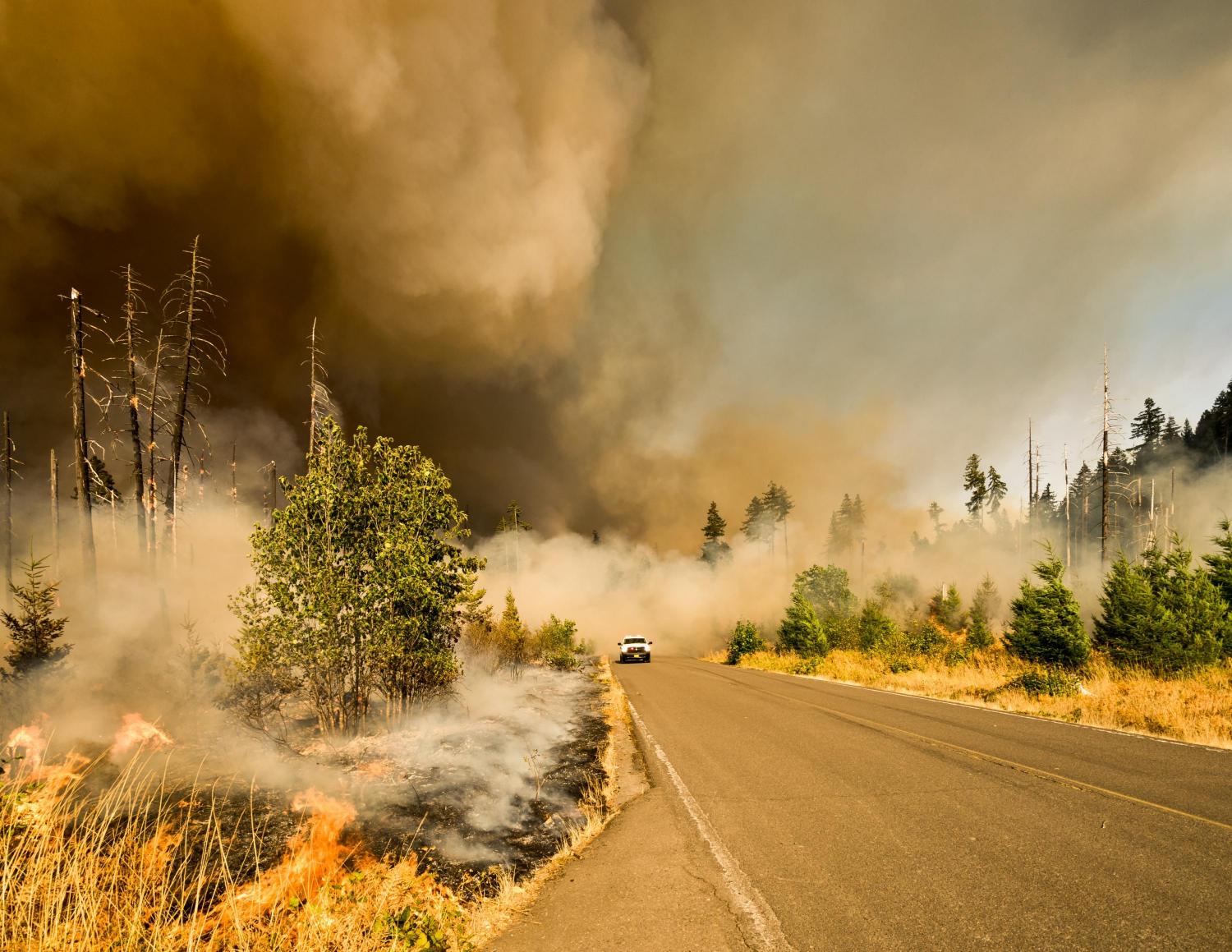
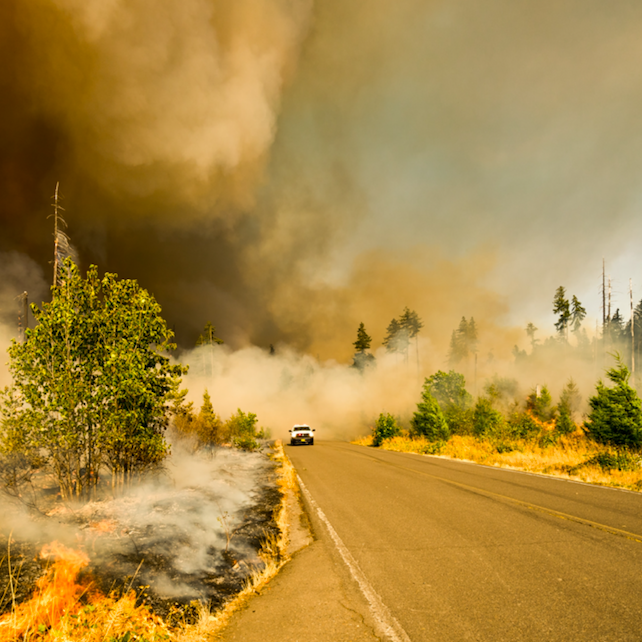
The U.S. experienced 14 climate and weather disasters in 2019 that each cost $1 billion or more. Those catastrophes attributed to climate change include three major floods, eight severe storms, two tropical cyclones and one wildfire. Last year marked the fifth consecutive year in which 10 or more billion-dollar disasters occurred in the U.S.
All of those billion-dollar disasters slow down the economy. The International Monetary Fund (IMF) described the global economy as “in a synchronized slowdown” in the October 2019 edition of the World Economic Outlook. In a recently released update, global growth is projected to only increased “modestly” from 2.9 percent in 2019 to 3.3 percent in 2020 and 3.4 percent in 2021. Growth in advanced economies is projected to “slow slightly” from 1.7 percent in 2019 to 1.6 percent in 2020 and 2021. Growth in the U.S. is projected to slow, too. “The projected recovery for global growth remains uncertain,” the IMF noted in its update.
Part of the sluggishness of the economy is attributed to climate change. The IMF urged countries “to cooperate on multiple fronts to lift growth and spread prosperity,” which includes limiting global temperature rise and “the severe consequences of weather-related natural disasters.”
Average global temperature rise will affect economic growth
The IMF released a report in October 2019 which looked at the long-term impacts of climate change on the economy. By analyzing data from 174 countries, researchers found that “per-capita real output growth is adversely affected by persistent changes in the temperature above or below its historical norm.” A “persistent increase” of just 0.04 degrees Celsius per year in average global temperature, without mitigation policies, will reduce GDP per capita by over 7 percent by 2100, they found.
Climate researchers tend to underestimate the costs of climate change, according to a report by a team of scientists and economists from the Earth Institute at Columbia University, the Potsdam Institute for Climate Impact Research, and the Grantham Research Institute on Climate Change and the Environment. One of the takeaways from their report is that both political and business leaders need to understand that economic losses from failing to keep global temperature rise to 1.5 degrees Celsius will be significant.
The costs of not mitigating climate change will be high in the U.S. alone: A 2019 study found that there are already damages in some sectors across the country, and they will increase to hundreds of billions of dollars annually by the end of the century without checks on global temperature rise. Researchers concluded that no regions in the country will “escape some mix of adverse impacts.”
The Fourth National Climate Assessment in 2018 came to similar conclusions. If emissions continue to grow at “historic rates,” there will be annual losses in some sectors that reach hundreds of billions of dollars by the end of the century and will be more than the current GDP of many U.S. states. “In the absence of significant global mitigation action and regional adaptation efforts, rising temperatures, sea level rise, and changes in extreme events are expected to increasingly disrupt and damage critical infrastructure and property, labor productivity, and the vitality of our communities,” the U.S. national assessment stated.
The economic losses of climate change can be lessened
There is a big lesson to be learned here: The economic loss of climate change can be lessened. Limiting annual temperature increases to 0.01 degrees Celsius will reduce the GDP loss to around 1 percent, according to the IMF. The International Labor Organization projects that there will be gains from climate change mitigation, which includes 18 million more jobs from limiting global temperature rise and 6 million more jobs from embracing the circular economy.
Image credit: Marcus Kauffman/Unsplash
Popeyes No Longer Playing Chicken with Animal Welfare


Popeyes reaped huge financial and viral success with last summer’s rollout of its popular chicken sandwich, which in turn has inspired countless memes and, well, several bizarre episodes of violence. Critics have pointed out the results of the sandwich’s wild popularity were often brutal for both Popeyes employees and for what they were cooking, frying and serving — all those chickens.
The fast-food chain has long claimed to be committed to animal welfare principles, but some observers have retorted the statement is at best vague.
More fast-food companies pledge to improve animal welfare standards
Meanwhile Popeyes' competitors in the fast-food space, including Qdoba, Jack in the Box and Chipotle have adopted new animal welfare policies over the past three years in response to the increased consumer demand for humanely-raised food.
Now, the Miami-based company, with the backing of its owner, Restaurant Brands International, has become the first U.S. chicken restaurant chain to adopt the Better Chicken Commitment (BCC). Popeyes says it will deploy these guidelines no later than 2024. The company joins over 200 brands, including Starbucks and Subway, which have signed similar pledges.
Companies that follow the BCC’s guidelines have to adopt these four changes, as well as agree to third-party auditing:
- Raise breeds of chickens that are more resilient in the long term.
- Ensure their suppliers provide more space for chickens by following Global Animal Partnership (GAP) guidelines.
- Improve those chickens’ overall quality of life per GAP’s standards, including better bedding conditions and adequate lighting.
- Adopt stunning systems at the time of processing and end what animal rights activists on both sides of the pond say is the brutal and cruel throat-slitting of fully conscious birds.
“Every year billions of chickens suffer in our food system,” said Leah Garcés, president of Mercy For Animals, in an emailed statement to TriplePundit. “We commend Popeyes for taking a significant step toward reducing this suffering with their new policy. It also makes clear that if the king of the chicken sandwich can commit to treating chickens better, there’s no excuse for any of their competitors, such as McDonald’s, KFC and Chick-Fil-A, not to follow suit.”
It's been said the road to success and failure are almost exactly to same — and yes, the chicken sandwich has been a double-edged sword for Popeyes. For all the buzz the chain received last summer and into the fall, there were more than a few pundits who described that chapter of chicken sandwich mania as “nihilism,” sarcastically described as “here to save America” and having its own “dark truth.”
Not all animal welfare activists will be satisfied with Popeyes’ latest move, but perhaps kinder treatment of chickens will generate kinder headlines for Popeyes once these new guidelines become the norm.
Image credit: Mai Moeslund/Unsplash